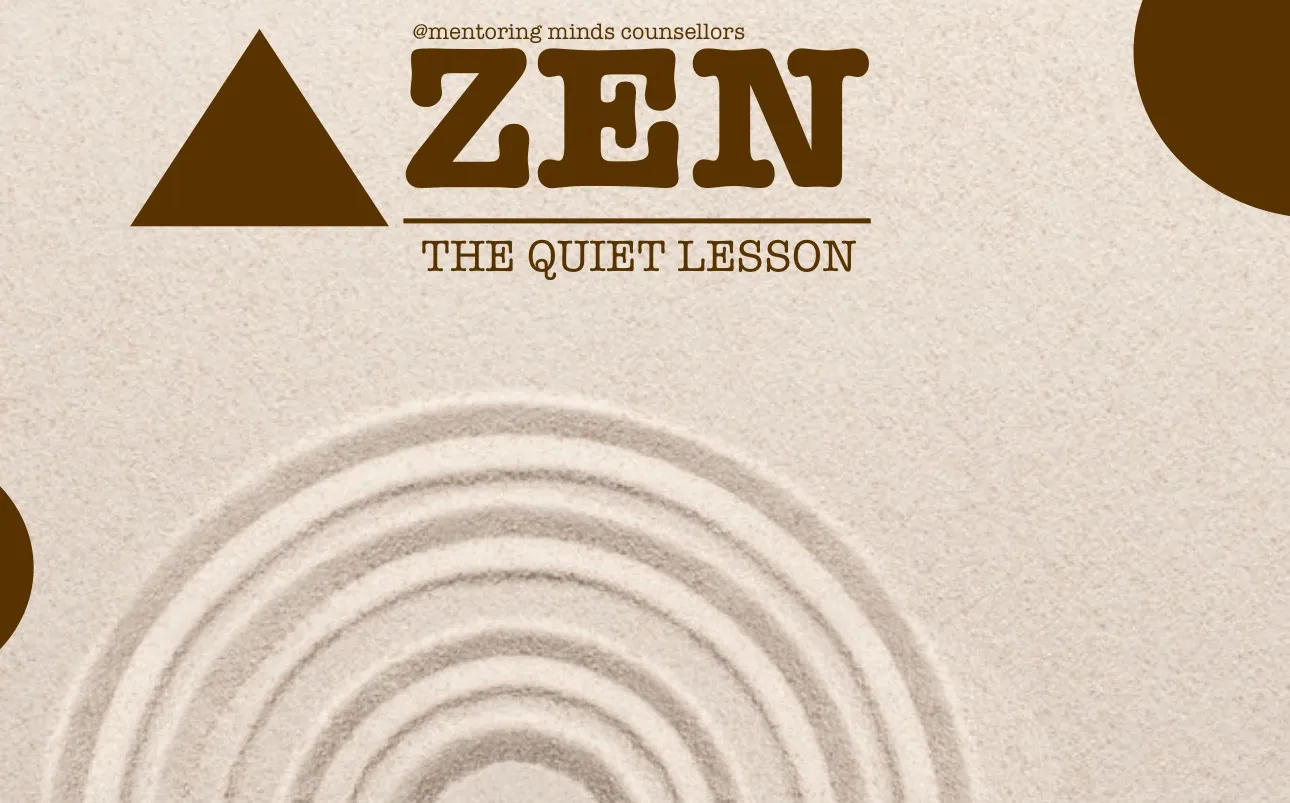We are somewhere used to filling silence with music, chatter, scrolling, or even just our own racing thoughts. Yet, Zen teaches us that in the quiet, we can find something deeper clarity, peace, and a connection with ourselves.
Zen is not about escaping life, but about being fully present in it. The “quiet lesson” of Zen is simple yet profound: stillness is not empty it’s full of wisdom. When we stop running from silence, we learn to listen to life as it is.
What Is the Quiet Lesson of Zen?
The quiet lesson is the art of being. It’s the reminder that mindfulness isn’t about forcing calm or chasing happiness it’s about noticing.
- The sound of your breath.
- The way sunlight rests on the floor.
- The taste of your morning tea.
Zen invites us to slow down enough to experience these details without judgment or rush. It’s in this noticing that the mind softens, and peace naturally arises.
How to Practice Zen for Mindfulness?
1. The Silence
Spend five minutes each day sitting quietly. No phone, no distractions. Just breathe and notice the rise and fall of your body. At first, your mind will wander let it. The practice is gently returning to the breath.
2. The Single Thought
If you’re drinking tea, just drink tea. If you’re walking, just walk. Avoid multitasking. Zen mindfulness thrives when we give one task our complete attention.
3. The Ordinary
Bring awareness to simple moments: washing your hands, folding clothes, waiting in line. See these not as chores, but as opportunities to be fully present.
4. The Space for Quietness
Our schedules are often packed, but even pausing for a breath before sending an email, or stepping outside for a moment of stillness, can be powerful. Quiet moments recharge the mind.
5. The Wireless Judgment
Zen teaches acceptance. If you feel restless, notice it. If you feel calm, notice that too. Mindfulness grows not from fighting your experience but from allowing it to be.
Why This Matters
We at Mentoring Minds Counsellors understand that when we practice Zen’s quiet lesson, mindfulness stops being a technique and becomes a way of living. We learn that peace is not found in escaping noise but in returning to stillness, again and again. In this practice, the simple becomes sacred, and the present moment becomes enough.
The beauty of Zen is that it doesn’t demand perfection it asks only for presence. By embracing the quiet lesson, you’ll discover that silence is not empty. It’s full of life, waiting for you to notice.


Leave a Comment